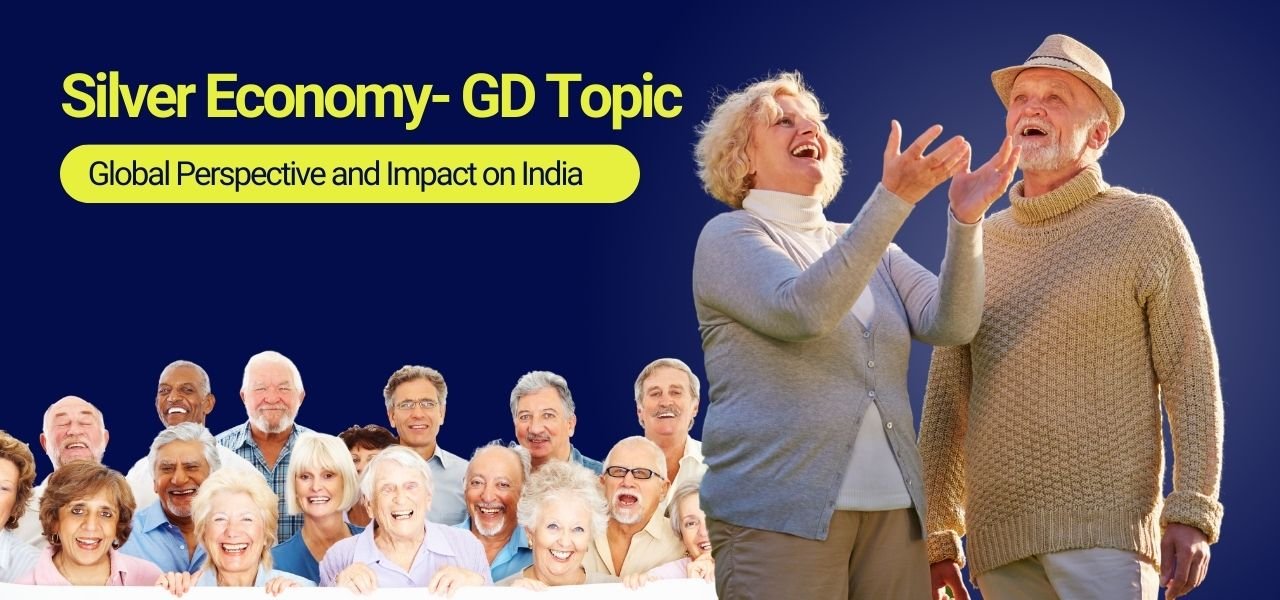This demographic trend witnesses the economic opportunity and challenge posed by the ageing population. This trend is changing economies everywhere, with older adults considered a very potent consumer market force. With increasing numbers, financial freedom, and specific needs, the elderly population is affecting the healthcare, housing, technology, and leisure industries. Below is an in-depth study of the Silver Economy in 2025.
Global Overview of the Silver Economy
The growth patterns of the Silver Economy have never been so fast worldwide. In the European Union, it is estimated that growth will amount to €6.4 trillion by 2025 and is able to support 88 million jobs. This translates to 32% of the EU’s GDP and 38% of EU employment. Similarly, Japan, which hosts one of the oldest profiles anywhere in the world, has also turned the older demographic into economic prospects. Senior citizens there demand advanced healthcare, automation, and age-friendly technology.
Also, the same can be seen in another economy, the United States. The Bureau of Economic Analysis report, published in 2024, states that senior citizens contribute $8 trillion to the economy. Their contribution is via consumption, investment and tax. With increasing life expectancy, an even greater demand for goods and services for seniors is expected.
Check out – Top 50 MBA Colleges in India | Top MBA Colleges in Jaipur
The Silver Economy in India
India is experiencing a demographic change. Historically regarded as a young nation, the elderly population is surging in numbers. It is projected that in 2050, there will be about 319 million senior citizens, increasing from 140 million in 2023. This demographic increase has given birth to the newly minted Silver Economy in India.
According to the National Statistical Office (NSO) in 2025, almost 20% of Indian wealth is thus held by elderly people. They are active stakeholders in consumer spending in health care, insurance, travel, and retirement homes. Offerings aimed at meeting their special needs are evolving, from age-friendly smartphones and wellness programs to assisted living.
However, many poor challenges remain. According to a report in HelpAge India, 2024, 40% of senior citizens in India remain financially insecure, and rural areas still lack access to adequate healthcare. Without addressing these issues, the full potential of the Silver Economy in India will never be realized.
MBA Placements – IIM Placements | Best Placement MBA Colleges in India
Economic Opportunities
The Silver economy harbours huge business opportunities in many sectors:
- Healthcare and wellness
- The demand for healthcare services, chronic disease management, and geriatric care conferred by the ageing population, as well as telemedicine and wearables, are some specialization areas that are trending.
- According to a 2025 report by McKinsey, the global market for eldercare products may approach $1.5 trillion by 2030.
- Housing and Infrastructure
- Demand for retirement communities, assisted living apartments, and age-friendly housing is soaring.
- Smart home solutions (like voice activation, etc.) are in vogue among seniors.
- Technology
- Gerontechnology, where ageing and technology meet, is revolutionizing life for the elderly.
- The intersection of ageing and technology is changing the way seniors live. AI-based personal assistants, fall-detection devices, and brain-training apps have changed lives.
- Leisure and Tourism
- Seniors represent an expanding niche tourist market.
- Industry leaders have designed customized tours and cruises for the senior traveler.
Silver Economy Challenges
The above opportunities are shadowed by significant constraints in the Silver Economy. Challenges will include: Health-Emerging demand for healthcare services is not being equitably met across populations, especially in developing economies. Financial security- Many of the older people are financially dependent on others. Social inclusion- Many seniors suffer from loneliness and isolation, which jeopardizes their mental health. Our challenging environment requires governments and business actors to tackle these issues so that the elderly population is fully participating in the economy.
The Road Ahead
The Silver Economy is not just an economic event but rather a social-change movement. The opportunities and economic activities of the economy must be maximized through investments by government agencies, industry players, and communities. In turn, policies targeting financial security, healthcare accessibility, and social inclusion will be needed to enhance the productive capacity of the elderly. Business innovation is also critical in offering new ways and means of addressing the changing requirements of senior citizens.
By 2025, because of age-related issues, it will be a huge challenge and, conversely, a huge opportunity. With the good recognition of the positive contributions of older persons and their needs, sustainable growth continues while raising their standards of living. In Silver Economy discussions and deliberations, we must be concerned with building an inclusive and empowering future for all generations.





